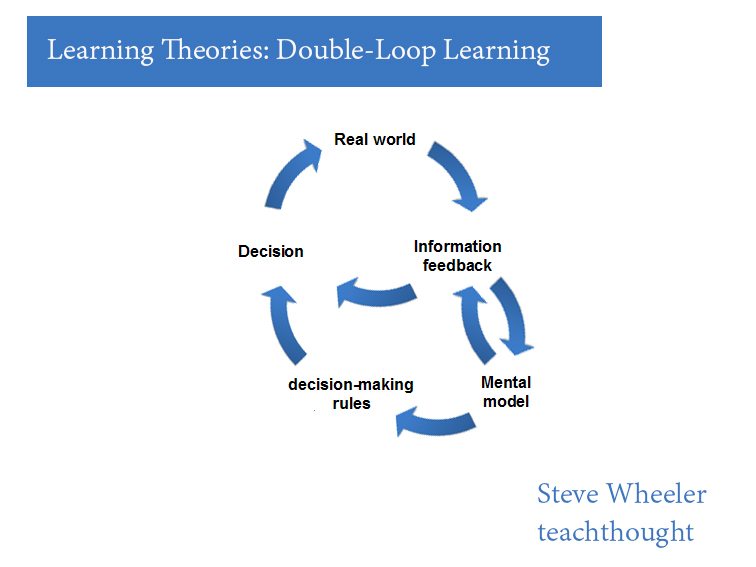Learning Theories: Double-Loop Learning
Double-Loop Learning: An Overview by Steve Wheeler, Associate Professor, Plymouth Institute of Education This is the second in my series of short blog posts on important theories of learning. My plan is to work through the alphabet of psychologists and provide a brief overview of their theories, and how each can be applied to education. In the…
Double-Loop Learning: An Overview
by Steve Wheeler, Associate Professor, Plymouth Institute of Education
This is the second in my series of short blog posts on important theories of learning. My plan is to work through the alphabet of psychologists and provide a brief overview of their theories, and how each can be applied to education. In the first post we looked at John Anderson’s cognitive architecture model ACT-R. Today, I’m going to discuss the work of Chris Argyris and his theory of double loop learning. This is a simplified explanation of the theory, so those who wish to read more deeply should read to the volume in the reference section.
The Theory
Argyris bases his theory on the premise that each of us has a cognitive map inside our heads – in other words, a mental script to deal with problems and challenges based on previous experience. Working with others including Donald Schon, Argyris developed this idea into a theory of learning. We live and work in a mode of ‘detection and correction of error’.
When we meet a problem, we fall back on our experience (including the rules and what we are allowed to do within them) and attempt to address the problem from this mental array of skills and knowledge – known as our ‘espoused theory of action’. We learn to develop a theory for everything, and this becomes our way of coping with change, decision making and challenges that come our way. Argyris calls this process Single Loop learning, and sees it as the most common response. He likens this to a thermostat in your house. When it becomes too warm, the thermostat turns down the heating.
Alternatively, in Double Loop learning, we learn to think outside of the box. We learn to examine the problem from a different angle, perhaps questioning the rules (what Argyris calls the ‘governing variables’), and attempting to make changes that are more holistic and wide ranging than merely solving the problem itself. As Argyris and Schon wrote in 1978,‘Double loop learning occurs when the error is detected and corrected in ways that involve the modification of an organization’s underlying norms, policies and objectives’ (p 2-3).
How It Can Be Applied In Education
It’s clear that Argyris’s work is aimed at organisational learning, so his work is of great relevance for learning and development professionals. Those who manage change in large organisations would also have an interest in how double loop learning (and the thinking behind it) might be encouraged.
Essentially, Argyris is calling for creative approaches to problem solving, where the problems themselves become opportunities for workers to improve their organisation, reflect on their practice and implement change that is sustainable and effective.
The theory also has applications in education where teachers can encourage their students to think more widely than the problem itself, examining the entire context in which the problem is presented. Creative and critical thinking of this kind can often lead the learner to a global appreciation of the topic they are studying.
References
Argyris, C. and Schon, D. A. (1978) Organizational Learning: A theory of action perspective. Reading, MA: Addison Wesley.
Graphic by xjent03 on Wikimedia Commons
This post first appeared on Steve’s personal blog; Graphic by Steve Wheeler; Learning Theories: Double-Loop Learning

